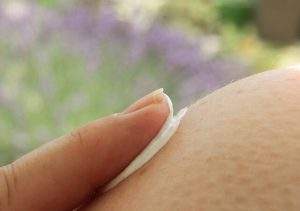Best Practices in Sunscreen Formulation, Part II
A review of critical requirements involved in creating effective sun protection products.
By Amit Patel
In Part I of this series, we explored how the rapid growth in global demand for sunscreen products has spawned many opportunities for formulators and marketers. To exploit them, however, requires following best practices for reaching an optimum outcome: a sunscreen product that meets functional, aesthetic and marketability mandates.
We then explained the best practices involved with homogeneity and film forming, and the use of organic absorbers. If you haven’t already, please read those recommendations, as well as the practices below, to have a firm foundation for sunscreen formulation success.
Physical sunscreens or inorganic filters
The use of physical sunscreens or inorganic sunscreen filters allows a formulator to address UVA or visible light-induced damage. Whether it’s UVA or UVB light, an effective sunscreen protects against both sets of wavelengths. The definitive data shows sun-induced free radical formation must be controlled to reduce the potential for more aggressive pathology to develop.
Sunscreens do that, despite continual widespread contradictory information requiring constant critical review and then re-education of the consumer. The key to physical sunscreens, also called inorganic UV filters, is particle size and solubility. Opaque or whiteness is inherent to using mineral sunscreens such as zinc oxide (ZnO) and titanium dioxide (TiO2), as well as their advantages of photostability, lower irritation, and broad spectrum coverage.

Inorganic sunscreens are well documented, with the mechanism of action being the scattering and reflecting of light. Titanium dioxide occurs in three forms, anatase, brookite and rutile. It’s the rutile and anatase form that have sunscreen protection. Anatase TiO2 has more photoactivity than rutile, thus the formulator can deduce that rutile is more stable, though not as potent in generating reactive oxygen species (ROS).
Consider the dispersions of TiO2 and examine the type of polymorph being used. Note that TiO2 dispersions reflect the UVB spectrum of light and therefore are good when used to supplement UVA organic sunscreens, while ZnO dispersions reflect the UVA spectrum and supplements UVB organic sunscreens. The particle size influences not only the transparency but also the efficacy of the inorganic portion in scattering light. Thus, the size of the particle – though small – still has the power to offer protection. There is a balance, however, when determining particle size. It should not exceed specific nano limits, which allows them to be easily absorbed thru damaged staratum corneum.
The combination of physical sunscreens and chemical sunscreens can deliver a functional and efficacious formula. When the formula is complete there’s need for official testing, since sunscreen protection is an OTC (over-the-counter) declaration. This, in turn, requires an understanding of how to evaluate a formula for responsible public use.
Testing for protection
Exposure to solar ultraviolet radiation is the main etiological cause of skin cancer². UVA radiation is responsible for skin pigmentation, subdivided into UVA I and II (referring to the wavelength). UVB can induce pigmentation, but has a shorter wavelength and is responsible for actual skin damage as sunburn.
Since UVA can penetrate deeper, the potential for cell damage and ROS formation is greater. Thus, efficacy is a paramount requirement which needs to be tested thoroughly.
A formulator can refer to starter formulas with known SPF values or use calculators which provide a mathematical representation. A formula must have a ratio of UVB to UVA filters of at least 3:1 at a critical wavelength of absorption of 370nm. Using methods standardized by COLIPA established in 2006 and/or FDA for OTC use, final monograph 21 CFR 1999 can establish the appropriate claim.
Such a test depends on the minimal erythema dose (MED) when protected by sunscreen versus the MED without protection, such is when the ratio equates to SPF (3). As mentioned previously, there are standard test methods outlining the application, dose, and measurement of SPF, and these are normally carried out by independent labs.
To assess the reliability of the lab, provide a known control in a double-blind study and have the lab perform an analysis. Surprisingly, the variation from lab to lab can be wide, so finding a reputable controlled lab is often difficult. It’s one thing to know a test method, while it’s another to know and implement the test correctly.
Sources
¹Klug,H.L.P; Tooze,J.A;Cheery-Graff,C;Anver M.R; Noona,F.P; Fears, TR; Tucker, M.A; Fabo, E,C; Merlino, G, Sunscreen Prevention of melanoma in man and mouse, Pigm. Cell Melanoma Res v. 23, n.6, p 835-837, 2010.
² Elosie Berbel; Kaminski, Renate; Correa,Marcos; Chiavacci,Leila; Inorganic UV Filter Inorganic UV Filters, Brazilian Journal of Pharmaceutical Sciences, Vol 49, n 2, Apr/Jun 2013.
 About Amit Patel
About Amit Patel
Amit Patel is Innovation & Applied Science Manager at Coast Southwest, and an accomplished scientist with more than fifteen years of product development experience in the personal care industry. Learn more about Amit here.

 About Amit Patel
About Amit Patel